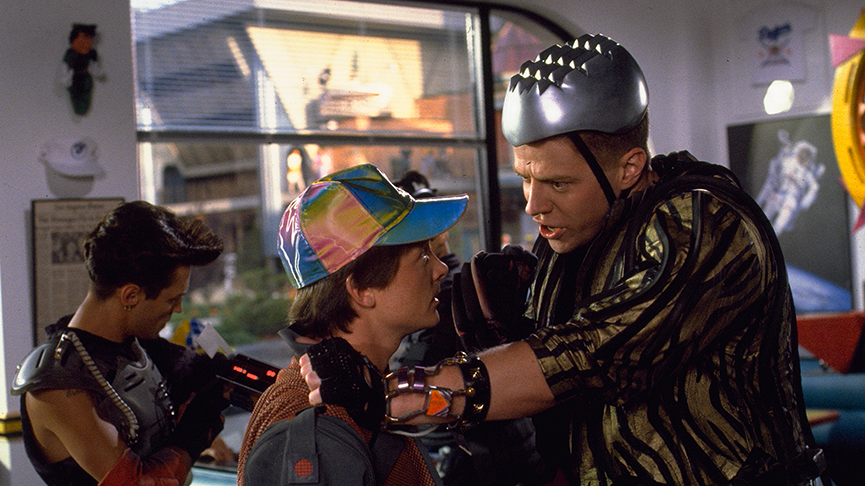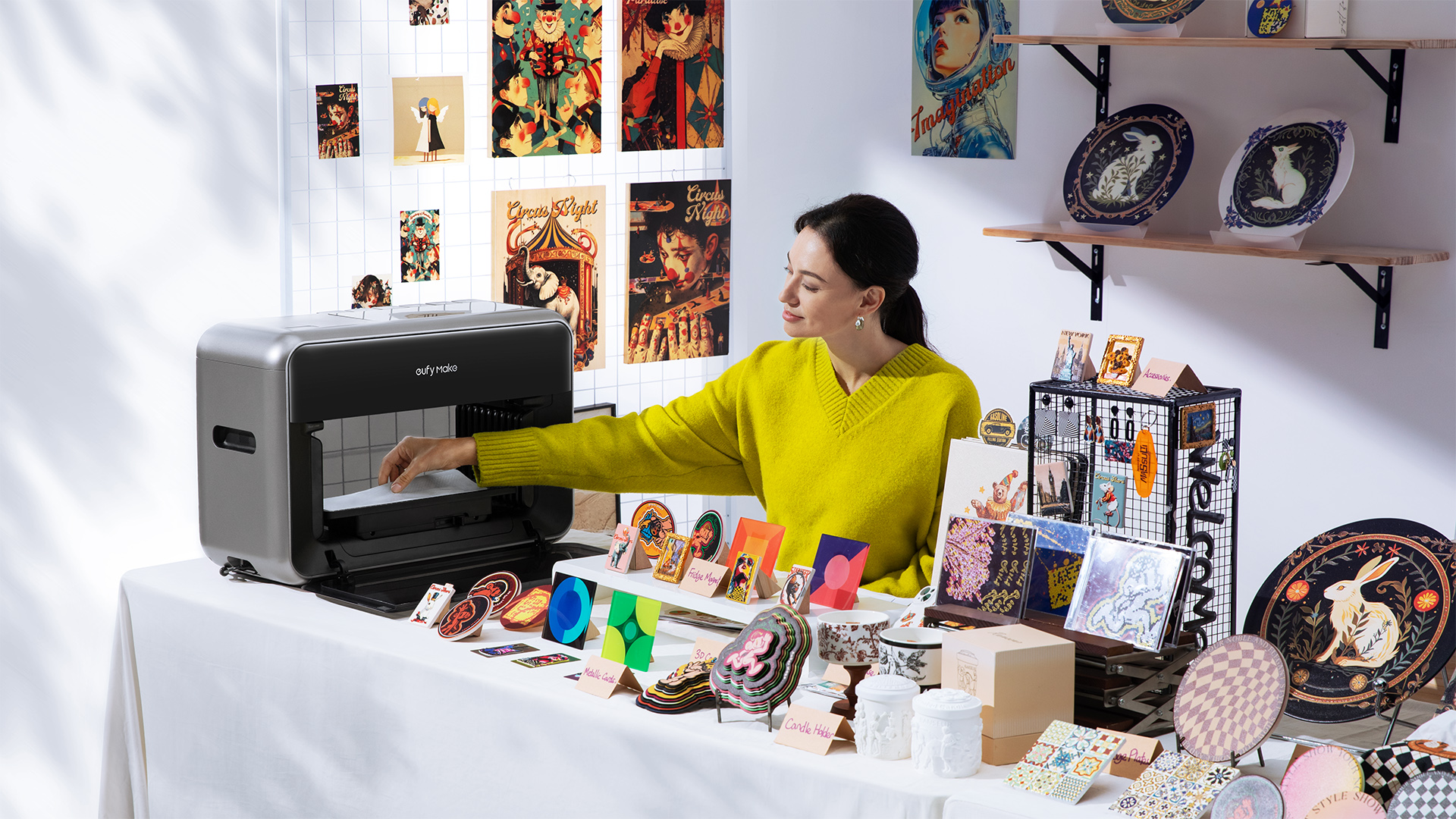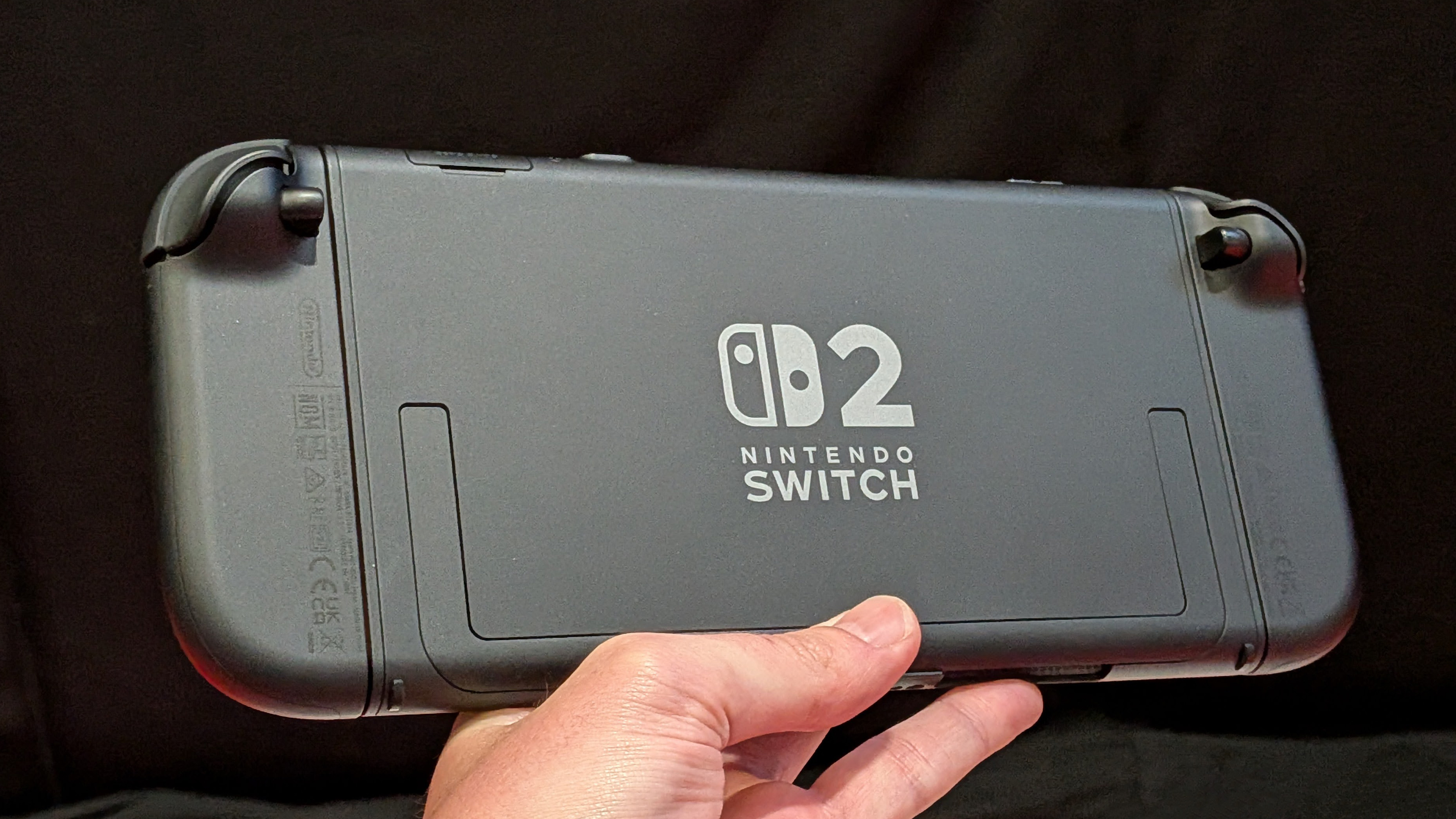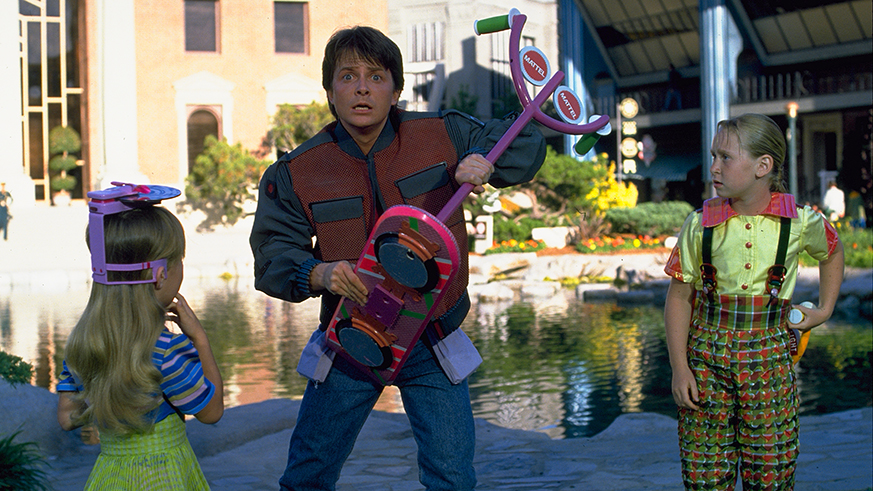
Did you wake up this morning with a strange sense of deja vu? Did you look out at the 21st October 2015 and think “There's something very familiar about all of this”?
You've probably been here before. As you almost certainly know, today is the day that Doc Brown, Marty and his girlfriend Jennifer travelled to aboard the Delorean in 1989's Back to the Future Part 2.
The film painted an optimistic vision of the future far from the dystopian visions often found in science fiction (as long as no one gives Biff Tannan a sports almanac, anyway). What's perhaps most remarkable is that 30 years on we're as distant from the original film's release in 1985 as it was from the 1955 it recreated.
And yet we're still talking about it. So why has it endured for so long? And what was it like working on the series?
- Also read: Meet the man who made Marty McFly's future
To find out, I had a brief chat with Marjorie Stone McShirley who was a set designer on the first film and art director for the sequels.
Perhaps one of the most memorable things about the films is how despite being set in multiple time periods, and alternative realities, there are certain subtle continuities between each. For example, the “Twin Pines Mall” where Marty first goes back in time becomes the “Lone Pine Mall” following changes he made in 1955. So how did Marjorie come up with these continuities, and to what end? What was key to making the time travel fit together?
“I think again when you're doing a picture on time you have to have references [...] and they exist all through the film and I think the clock most obviously the main icon. Time is the basis of everything and we're talking about time now - here we are in 2015. We're using that as a reference. So the clock I think was really, really important.”
Sign up to the T3 newsletter for smarter living straight to your inbox
Get all the latest news, reviews, deals and buying guides on gorgeous tech, home and active products from the T3 experts
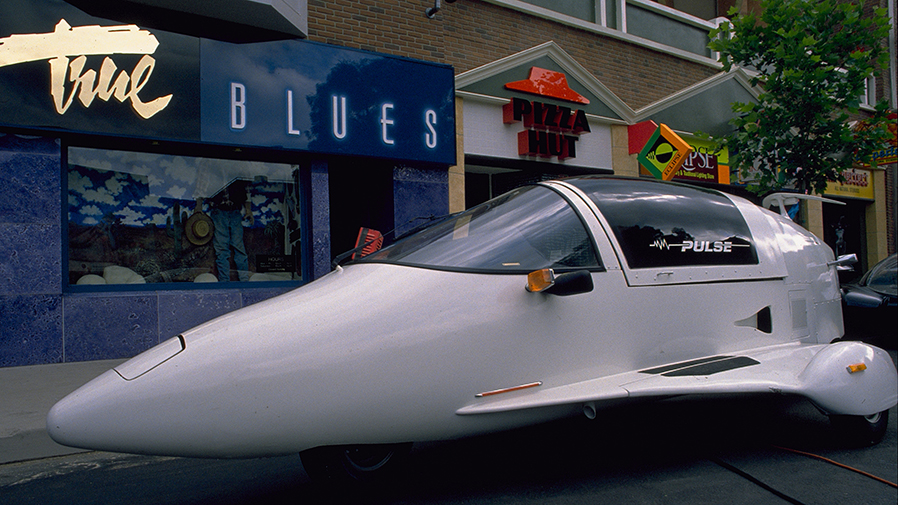
But how did this desire for references manifest itself in the sets and the way the film was dressed? Marjorie explained to me that that Universal Studios' famous Courthouse Square was the starting point: the set has been used for filming hundreds of movies and TV shows (though is perhaps most closely associated with BTTF), so picking what featured here was key.

Take the 1950s cafe for example, which Marjorie was the set designer for - she did the original drawings. She explained to me how the 50s could be conjured up by placing the right products, the right things on the walls - and even the linoleum on the ground.
“So when we went to the future it was in the same place. The same building. And how do we make that look like the future? [...] At the time everybody was really into health, we were all trying to exercise, especially California. So I suggested instead of stools I suggested we use [exercise bikes]. So that became a stool instead of a regular stool.”
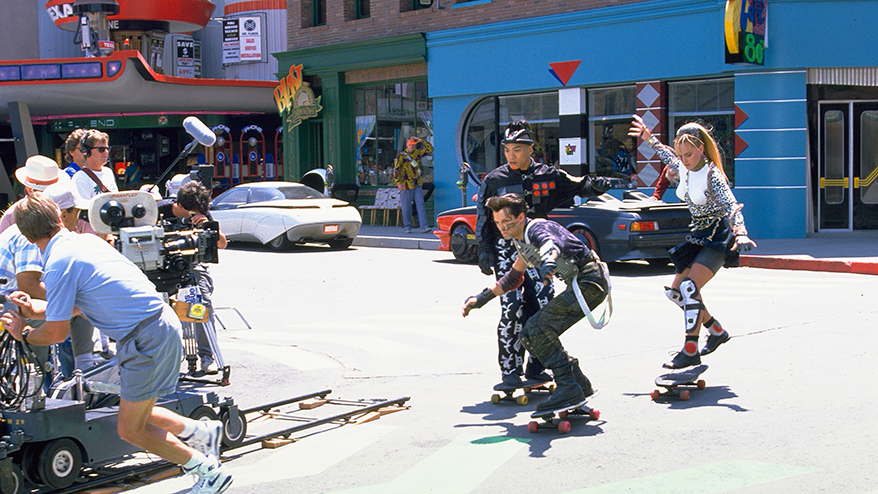
In fact, many of the things featured in BTTF2 are surprisingly prescient: The Internet of Things is making our homes smart with devices like Amazon Echo designed to respond to voice commands. We have video calling and giant, flat TVs. Heck, there's even been a half-decent attempt at inventing a hoverboard. The only thing the film really seems to get wrong is overestimating the popularity of Google Glass - a wearable computer not dissimilar to the one worn by Marty's family in 2015.
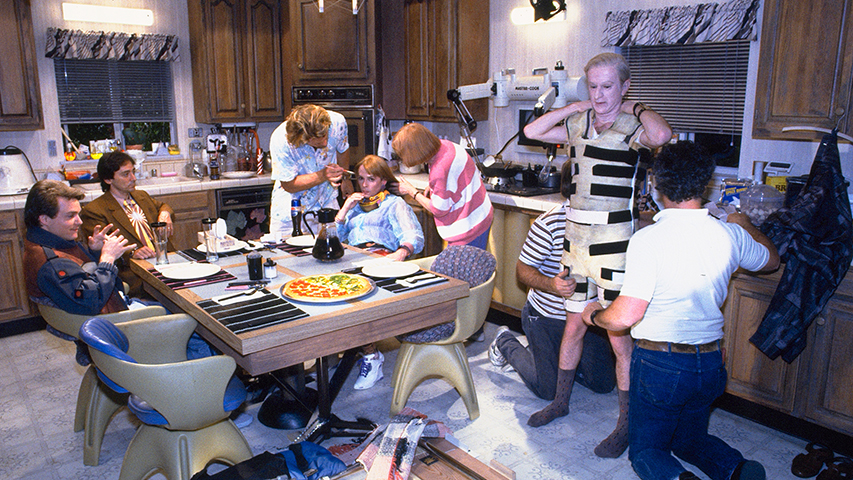
So I couldn't help but wonder: Did Marjorie think the film would still be watched and loved 30 years on, which must have seemed rather distant at the time? Is she surprised by the enduring popularity? And will people still be watching in 30 more years?
“Well the first thing I'll say is yes I hope so”, she told me, “for some reason, and nobody really knows the answer, this movie has hit a chord where it speaks to so many people.”
“I can tell you I went recently in LA to the Hollywood Bowl [a large, open-air amphitheatre] where for this anniversary they had the movie on the screen and they had the orchestra playing the score live. It was packed. A sea of people. It was just incredible. it was like seeing it [for the first time] again.”
“The first time I saw [BTTF Part 1], when they had the crew screening, when it was over everyone jumped up it was such a high. It was like 'oh my gosh this is a hit'. And here this many years later at the end of the film everybody went crazy. I turned around because I was in the front and looked back at the sea of people and they were going crazy. There's something that speaks to people. It's many things but I just think it's the perfect intersection of talent, timing, beautiful writing, beautiful score, everything just set [perfectly] at one time. I guarantee you everyone will still be watching it, I really do.”
Ultimately though, she thinks that it is about something more fundamental. “It's kind of about family relationships, I mean the thought of going back and seeing your mother and your father and I mean I don't think that's anything that will ever dissipate as people go forward thinking about their future and their past.”
Liked this? Check out Want a hoverboard? Here's how you can get one
The Back to the Future trilogy 30th anniversary edition is out now on DVD and Blu-ray.
